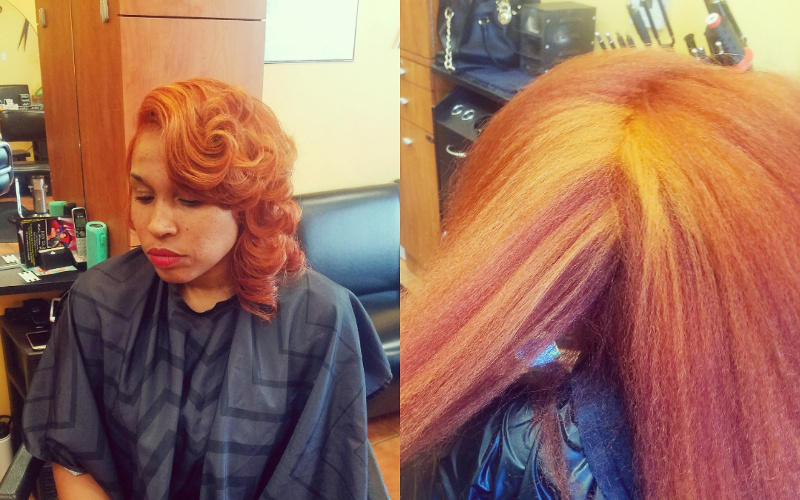It’s common knowledge that coloring curly hair is a largely different experience than coloring straight hair. Curly hair soaks up pigment differently, is more prone to moisture loss and color placement is more complex because of the hair’s curl pattern. And, when your client has extremely tight curls and kinks—a texture many women of color have—the right technique becomes even more crucial. These clients often worry about breakage, hair loss and curl-pattern damage simply because their hair is more fragile. "To say that you shouldn't color or lighten tightly coiled hair is a myth. It can be done just as easily as any other texture with the right products and process,” says Schwarzkopf Professional Guest Artist, Johanna Freeman of Trinity Experience Salon in Hawthorne, CA. “The most important thing to take into consideration is the product line you choose. If the wrong product is used, the results can be the opposite of what the stylist and client are looking for.” Here, Freeman reveals her best tips for coloring tightly coiled hair:
Q. What is a good color product for women with tightly textured hair?
A. I believe cream colors work best. Schwarzkopf Professional IGORA ROYAL Color Cream and Oil Developer are great selections for coloring kinky, tightly coiled hair.
Q. Why do cream colors work so well with these hair textures?
A. Cream colors are more "curl friendly" than liquid colors. I find that they coat and penetrate the hair shaft more evenly, giving you more even results. The IGORA Royal Oil Developer is also a great choice for tightly curled hair because this hair type tends to be naturally dry, and the oil within the formulation helps replenish moisture taken out during the lightening process.
Q. What specific steps would you take when you color tightly curled, virgin hair?

A. First, conduct a consultation with the client. Find out who they are, what they do and what they are looking for in their new hair color. Lightly shampoo the client’s hair. Any product buildup slows down the process and creates blotchy color. Lightly blow-dry the hair. You never want to apply the color to wet hair. Double drape the client and section the head into two to four sections. Mix your product using 30 percent vol developer and apply the product to the most resistant area—the back—and work your way up. Proceed until the color is completely developed and the hair is ready to be shampooed and conditioned. For a tightly coiled hair, the most important step is the conditioning process. Tight kinks and curls also hold onto product, and it's very easy to unknowingly leave product in the hair. Always be sure to shampoo the hair with a neutralizing shampoo, and then proceed with a sulfate-free shampoo to lock in the color afterwards. And, always select a conditioning system that helps nourish the hair, so it feels silky and smooth.
Check out Johanna’s Instagram for more.